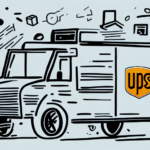Why Insure Your FedEx Packages
Using FedEx for your shipping needs offers reliability and efficiency, but unexpected incidents like loss, damage, or theft can still occur. Insuring your packages ensures that you’re financially protected against such risks, providing peace of mind and safeguarding your investments.
Protection Against Loss, Damage, or Theft
While FedEx is a trusted carrier, no shipping method is entirely immune to mishaps. Insuring your packages means that in the unfortunate event of loss, damage, or theft, you can recover the value of your shipment, minimizing financial setbacks.
Coverage for High-Value and Time-Sensitive Items
If you’re shipping high-value items like electronics, jewelry, or important documents, standard FedEx coverage may not suffice. Insurance allows you to declare the full value of these items, ensuring comprehensive protection. Additionally, for time-sensitive shipments such as perishable goods or critical business materials, insurance can cover losses resulting from delays.
Types of FedEx Insurance and Their Costs
FedEx offers various insurance options tailored to different shipping needs and package values. Understanding these options helps you choose the right coverage for your shipments.
Declared Value Coverage
Declared Value Coverage is the basic insurance included with your FedEx shipment. It covers up to $100 for lost or damaged packages. This option is suitable for everyday shipments that don’t exceed this value.
Additional Declared Value Coverage
For higher-value items, FedEx offers Additional Declared Value Coverage, allowing you to declare a higher shipment value up to $50,000. This extended coverage incurs higher insurance costs but provides greater protection for valuable contents.
Declared Value Exception
For exceptionally high-value items exceeding $50,000, the Declared Value Exception provides coverage with prior FedEx approval. This option is ideal for shipping very expensive goods, ensuring maximum protection.
Insurance Cost Factors
The cost of insuring your FedEx packages depends on several factors:
- Declared Value: The higher the declared value, the higher the insurance cost.
- Shipment Destination: International shipments may incur different rates compared to domestic ones.
- Package Dimensions and Weight: Larger and heavier packages may cost more to insure.
For detailed pricing, refer to FedEx’s official insurance page.
Determining the Value of Your Package for Insurance
Accurately determining the value of your package is crucial for selecting appropriate insurance coverage and ensuring adequate protection.
Itemized Valuation
Create a detailed list of all items within the package, assigning a specific value to each. Include receipts or invoices as proof of value, which will be essential if you need to file a claim.
Documentation and Proof of Value
Maintain comprehensive documentation, including purchase receipts, appraisal certificates for high-value items, and any other relevant records. This documentation substantiates the declared value and facilitates the claims process.
Purchasing Insurance and Filing Claims
Securing insurance and understanding the claims process are vital steps in protecting your shipments.
Steps to Purchase FedEx Insurance
To purchase insurance for your FedEx package:
- Create your shipping label through the FedEx website or at a FedEx location.
- During the shipping process, select the appropriate insurance option based on your package’s value.
- Complete the payment for both shipping and insurance.
For a step-by-step guide, visit FedEx’s insurance information page.
Filing a Claim for Lost or Damaged Packages
If your package is lost or damaged, filing a claim promptly is essential:
- Visit the FedEx Claims Center.
- Provide necessary documentation, including proof of value and evidence of damage or loss.
- Submit the claim online or through customer service.
Ensure you adhere to FedEx’s claim filing deadlines to avoid rejection.
Maximizing Your Insurance Coverage
To fully leverage your insurance coverage, implement the following best practices:
Best Practices for Packaging
Proper packaging minimizes the risk of damage. Use sturdy boxes, appropriate cushioning materials, and secure the contents to prevent movement during transit.
Accurate Labeling and Documentation
Clearly label all packages with accurate information. Include an itemized list of contents and their declared values to prevent confusion and expedite the claims process if needed.
Common Reasons for Claim Denials and How to Avoid Them
Avoiding common pitfalls can increase the likelihood of a successful insurance claim:
Incomplete Documentation
Ensure all required documents, such as proof of value and shipment details, are complete and accurate. Missing or incorrect information can lead to claim denial.
Improper Packaging
Using inadequate packaging materials can result in damage that voids insurance coverage. Follow FedEx’s packaging guidelines meticulously.
Underdeclaring Package Value
Accurately declare the full value of your shipment. Underdeclaring can lead to insufficient coverage or claim rejection.
Understanding the Terms and Conditions of FedEx Insurance
Familiarize yourself with the specifics of FedEx’s insurance policies to ensure comprehensive coverage:
What’s Covered and What’s Not
FedEx insurance typically covers loss, damage, and theft but excludes certain items like cash, valuable metals, and works of art without proper documentation. Review the FedEx insurance policy for a detailed list of covered and excluded items.
Deductibles and Exclusions
Understand any deductibles that apply and the specific exclusions in the policy. Being aware of these factors helps set realistic expectations for coverage and compensation.
Navigating the Claims Process
Follow FedEx’s claims process diligently:
- File claims within the stipulated time frame.
- Provide all necessary documentation.
- Communicate clearly and promptly with FedEx representatives.
Proper adherence to the claims process enhances the chances of a favorable outcome.
Conclusion
Insuring your FedEx packages is a strategic step to protect your valuable and time-sensitive shipments against unforeseen events. By understanding the different types of insurance, accurately valuing your packages, following best practices for packaging and labeling, and being aware of the claims process, you can ensure comprehensive coverage and peace of mind. Always stay informed about the latest FedEx policies and adjust your insurance strategies accordingly to maintain optimal protection for your shipments.




















